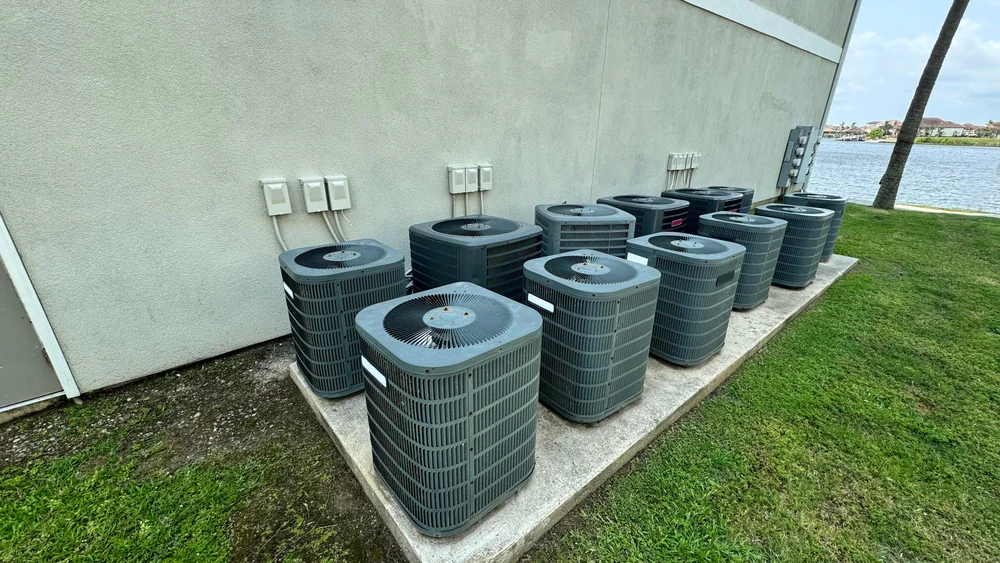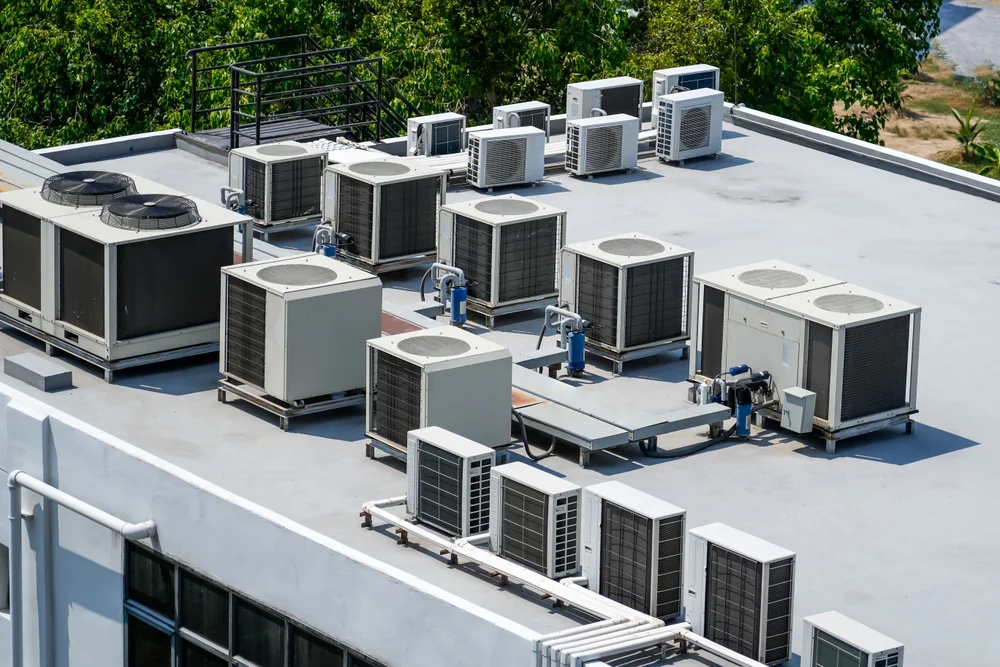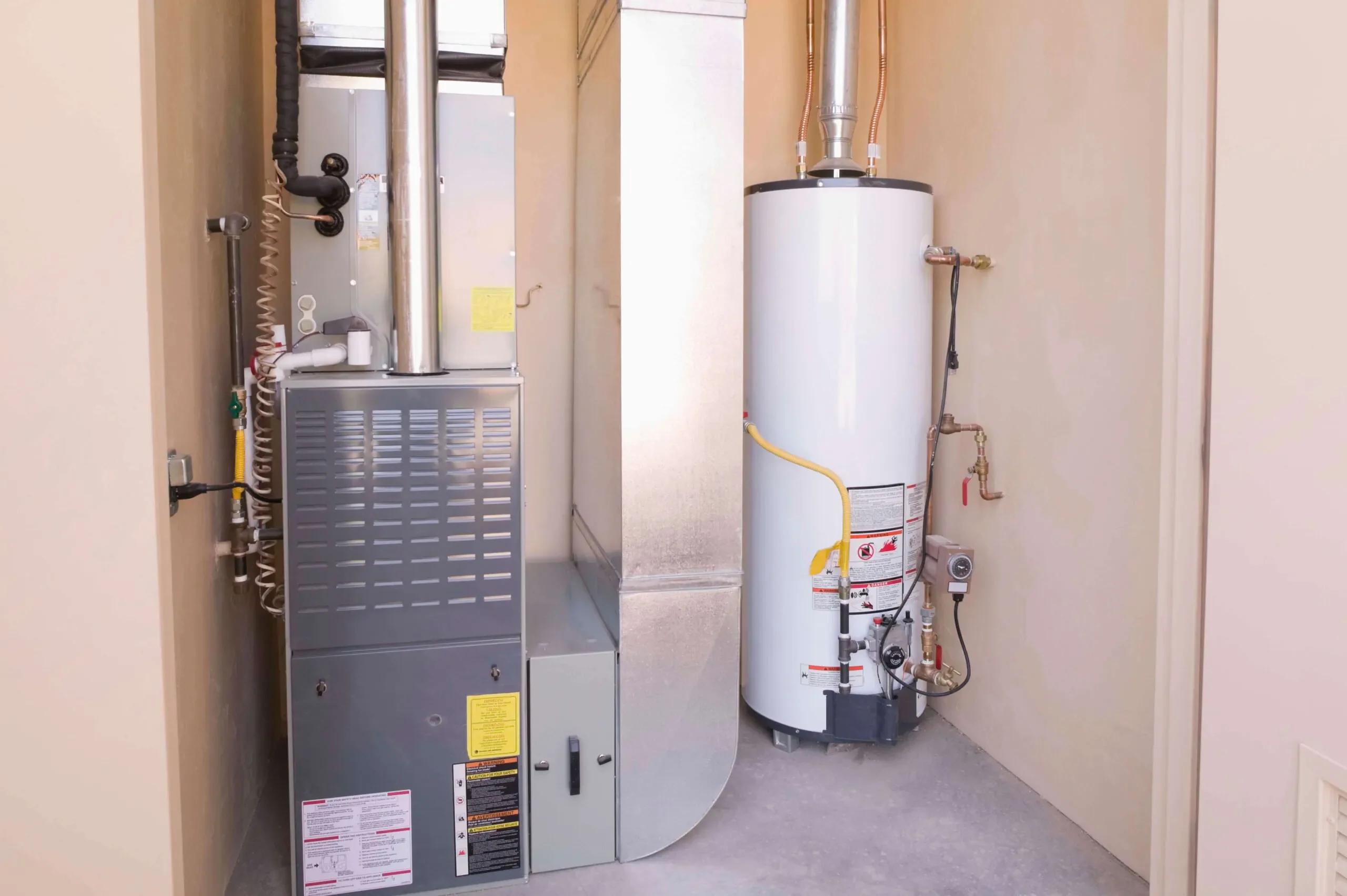Summary:
Variable Refrigerant Flow Systems Transform Commercial AC Installation
Variable Refrigerant Flow technology represents one of the most significant advances in commercial AC installation, offering precise control that traditional air conditioner installation simply can’t match. Unlike conventional systems that heat or cool entire buildings uniformly, VRF systems adjust refrigerant flow to match the specific needs of individual zones.
This means your conference rooms can stay cool during presentations while your warehouse maintains different temperatures based on actual usage. The technology eliminates the energy waste that comes from overcooling or overheating spaces that don’t need it, making VRF an intelligent choice for any AC installer focused on long-term efficiency.
How Modern AC Installation Handles Multiple Zones Simultaneously
The real power of advanced air conditioner installation lies in systems that provide simultaneous heating and cooling across different zones within the same building. A single outdoor unit can connect to up to 50 indoor units, each operating independently based on the specific needs of its zone—a capability that makes these systems ideal for complex commercial AC installation projects.
Think about your typical office building in San Antonio during spring or fall. While the south-facing conference rooms might need cooling due to solar heat gain, the north-facing offices could require heating during early morning hours. Traditional AC installation approaches force you to choose one mode for the entire building, wasting energy and compromising comfort.
VRF systems solve this by using heat recovery technology that captures waste heat from zones requiring cooling and redirects it to zones that need heating. This process dramatically reduces energy consumption while maintaining optimal comfort in every area. The system’s inverter-driven compressor continuously adjusts capacity to match real-time demand, eliminating the energy-intensive on/off cycling that characterizes older air conditioner installation methods.
Installation flexibility makes VRF particularly attractive for AC unit replacement projects and renovations. The lightweight indoor units require minimal structural modifications, and the modular design allows any experienced AC installer to complete systems floor-by-floor or zone-by-zone as your budget allows. This staged approach helps spread commercial AC installation costs over time while providing immediate benefits in completed areas.
Smart Controls Integration in Modern Air Conditioner Installation
Today’s commercial AC installation projects integrate seamlessly with building automation systems through standard communication protocols, creating a unified platform for facility management. This integration enables centralized control while maintaining the flexibility for individual zone adjustments—a crucial consideration for any AC installer planning large-scale projects.
Smart controls can learn occupancy patterns and automatically adjust temperatures based on actual usage rather than preset schedules. Motion sensors detect when spaces are vacant and reduce energy consumption accordingly. Advanced algorithms analyze weather forecasts and pre-condition spaces to minimize peak demand charges during extreme weather events, making these systems particularly valuable for AC replacement in Texas.
The integration extends beyond basic temperature control to include indoor air quality monitoring, predictive maintenance alerts, and energy consumption tracking. Facility managers can access real-time data from anywhere, receiving notifications about potential issues before they impact operations. This proactive approach reduces emergency service calls and extends equipment life—benefits that make advanced air conditioner installation a smart long-term investment.
Remote monitoring capabilities prove especially valuable for multi-site operations. A single dashboard can display the status of HVAC systems across multiple buildings, allowing centralized management while maintaining local control when needed. Automated reporting features track energy usage, maintenance schedules, and system performance, providing the data needed for informed decisions about future AC unit replacement timing and system upgrades.
AI-Powered Systems Revolutionize Commercial AC Installation
Artificial intelligence is revolutionizing commercial AC installation by transforming reactive maintenance into predictive strategies. AI-powered systems continuously analyze performance data, identifying patterns that indicate potential problems long before equipment fails—a capability that’s changing how we approach system design and maintenance planning.
These systems learn your building’s unique characteristics, occupancy patterns, and energy usage trends to optimize performance automatically. Machine learning algorithms adjust settings in real-time based on factors like weather conditions, occupancy levels, and energy costs, ensuring optimal efficiency without sacrificing comfort for any air conditioner installation.
Predictive Maintenance Features in Advanced AC Installation
Advanced monitoring systems collect thousands of data points every minute from sensors throughout your HVAC system, representing a major advancement in commercial AC installation technology. These sensors track everything from refrigerant pressures and temperatures to airflow rates and energy consumption patterns. AI algorithms analyze this continuous stream of data to identify anomalies that might indicate developing problems.
The system can detect issues like refrigerant leaks, worn bearings, or clogged filters weeks before they cause system failures. Early detection allows you to schedule maintenance during convenient times rather than dealing with emergency breakdowns during peak business hours. This proactive approach significantly reduces maintenance costs and eliminates the revenue loss associated with unexpected downtime—benefits that make advanced air conditioner installation particularly attractive for mission-critical facilities.
Diagnostic capabilities extend beyond simple fault detection to include performance optimization recommendations. The system might suggest adjusting operating parameters to improve efficiency or identify opportunities to reduce energy consumption without affecting comfort. Advanced analytics can even predict the optimal timing for AC unit replacement based on performance trends and maintenance costs, helping you plan future investments strategically.
Integration with mobile devices allows facility managers to receive instant alerts about system status and performance issues. Detailed diagnostic information helps any qualified AC installer prepare for service calls with the right parts and tools, reducing repair time and improving first-call resolution rates. This level of system intelligence transforms routine maintenance into a strategic advantage for businesses seeking reliable climate control.
Energy Management Innovation in Commercial Air Conditioner Installation
AI-powered energy management systems optimize HVAC operations to minimize utility costs while maintaining comfort standards, representing the cutting edge of commercial AC installation technology. These systems understand your facility’s energy usage patterns and automatically adjust operations to avoid peak demand charges and take advantage of time-of-use pricing—capabilities that make them increasingly popular for AC replacement in Texas.
Smart load management can pre-cool buildings during off-peak hours when electricity rates are lower, then reduce energy consumption during peak periods without affecting occupant comfort. The system learns how long your building retains conditioned air and uses this thermal mass effectively to minimize energy costs. This intelligent approach to energy management makes advanced air conditioner installation a financially smart choice for businesses focused on operational efficiency.
Demand response capabilities allow your HVAC system to participate in utility programs that provide financial incentives for reducing energy consumption during grid stress events. The system can automatically reduce non-critical loads while maintaining comfort in essential areas, generating revenue while supporting grid stability. These features are increasingly important considerations when we design systems for large commercial facilities.
Advanced forecasting uses weather data and occupancy schedules to optimize system operation hours in advance. If the system knows a conference room will be empty tomorrow afternoon, it can adjust conditioning accordingly. Similarly, weather forecasts help the system prepare for extreme temperature days by pre-conditioning spaces and optimizing equipment operation. This level of intelligence transforms traditional AC unit replacement projects into strategic investments in facility efficiency.
Energy analytics provide detailed insights into consumption patterns, helping identify opportunities for additional savings. The system can track the effectiveness of efficiency measures and quantify the return on investment for HVAC improvements, supporting data-driven decisions about facility upgrades and operational changes.
Selecting the Right Commercial AC Installation Technology
The latest innovations in commercial AC installation offer unprecedented opportunities to improve efficiency, reduce costs, and enhance comfort in large-scale applications. VRF systems provide the zone-level control and energy efficiency that modern facilities demand, while AI-powered optimization ensures your equipment operates at peak performance regardless of changing conditions.
Success depends on selecting technologies that match your facility’s specific needs and partnering with experienced professionals who understand both advanced air conditioner installation techniques and your local climate challenges. The investment in innovative HVAC systems pays dividends through reduced energy costs, improved reliability, and enhanced occupant satisfaction.
When you’re ready to explore how these innovations can benefit your facility, we bring the expertise and experience needed to design, install, and maintain advanced commercial HVAC systems that deliver results in the demanding Texas climate.




